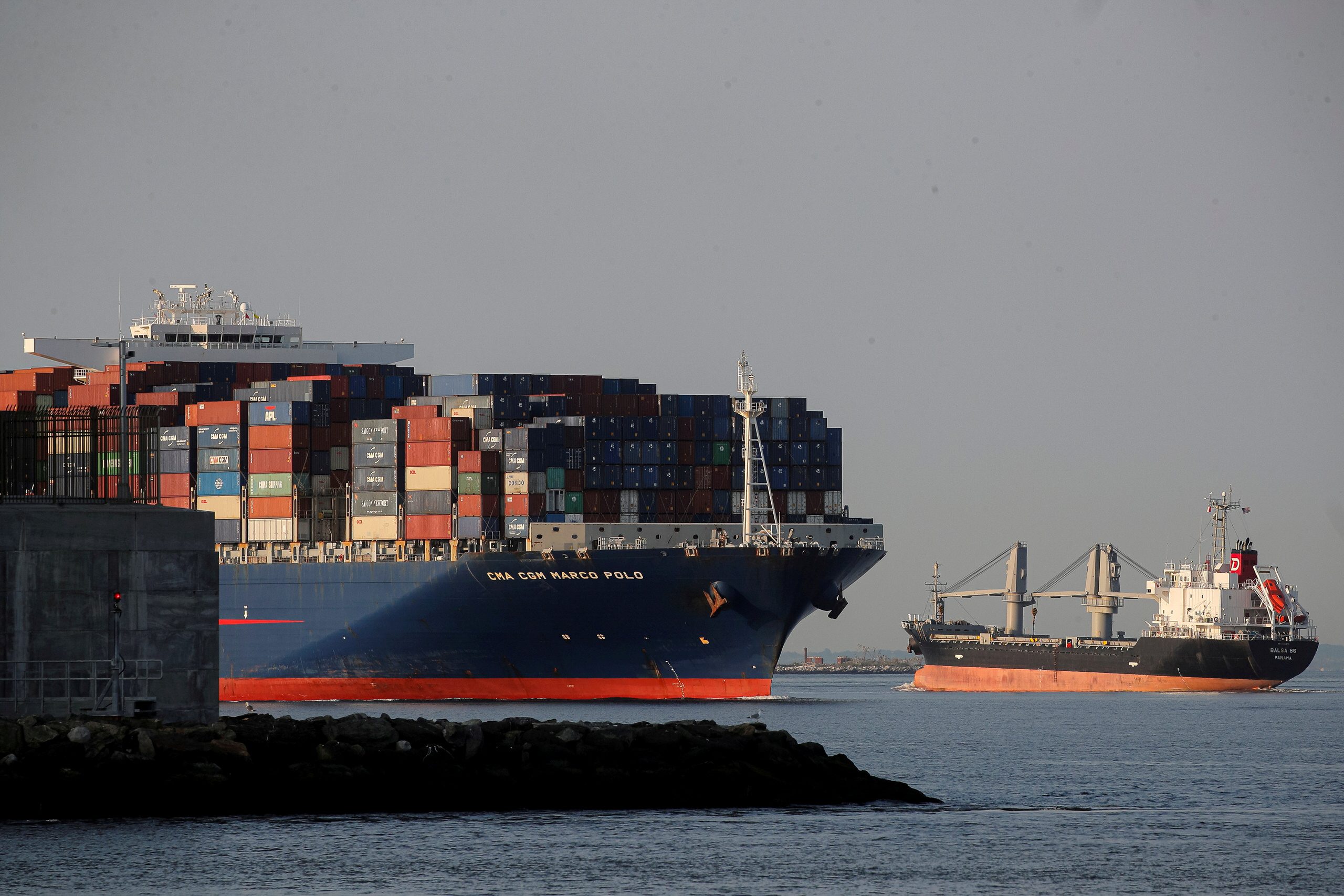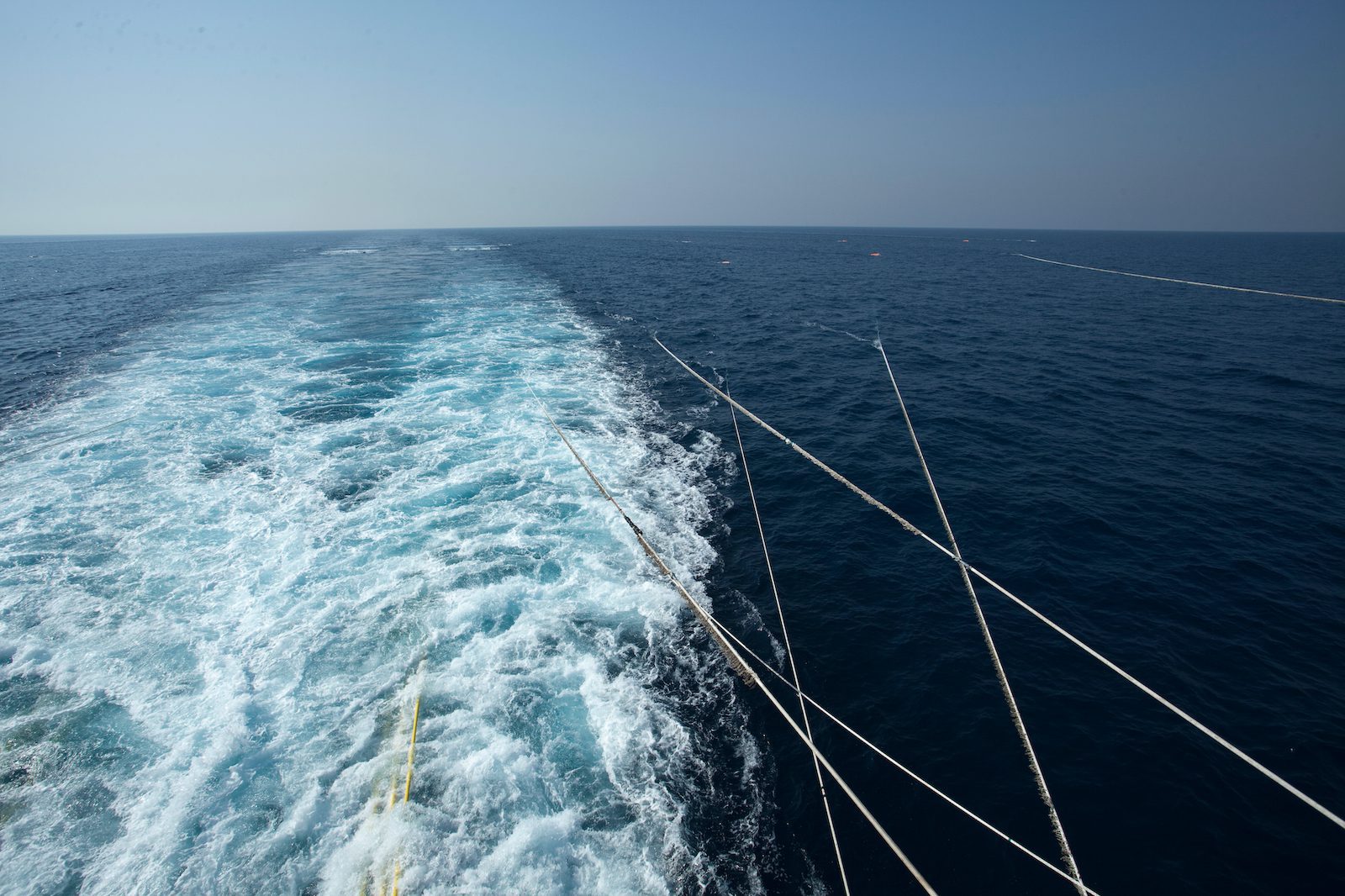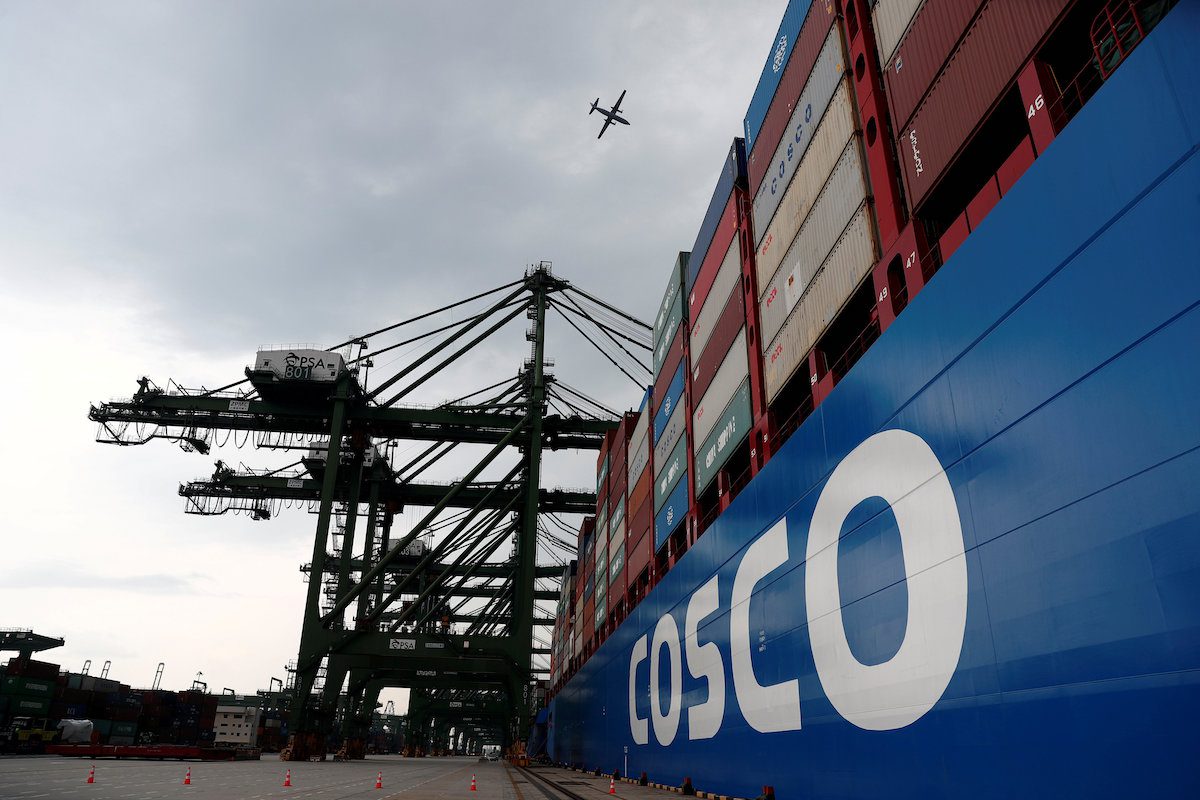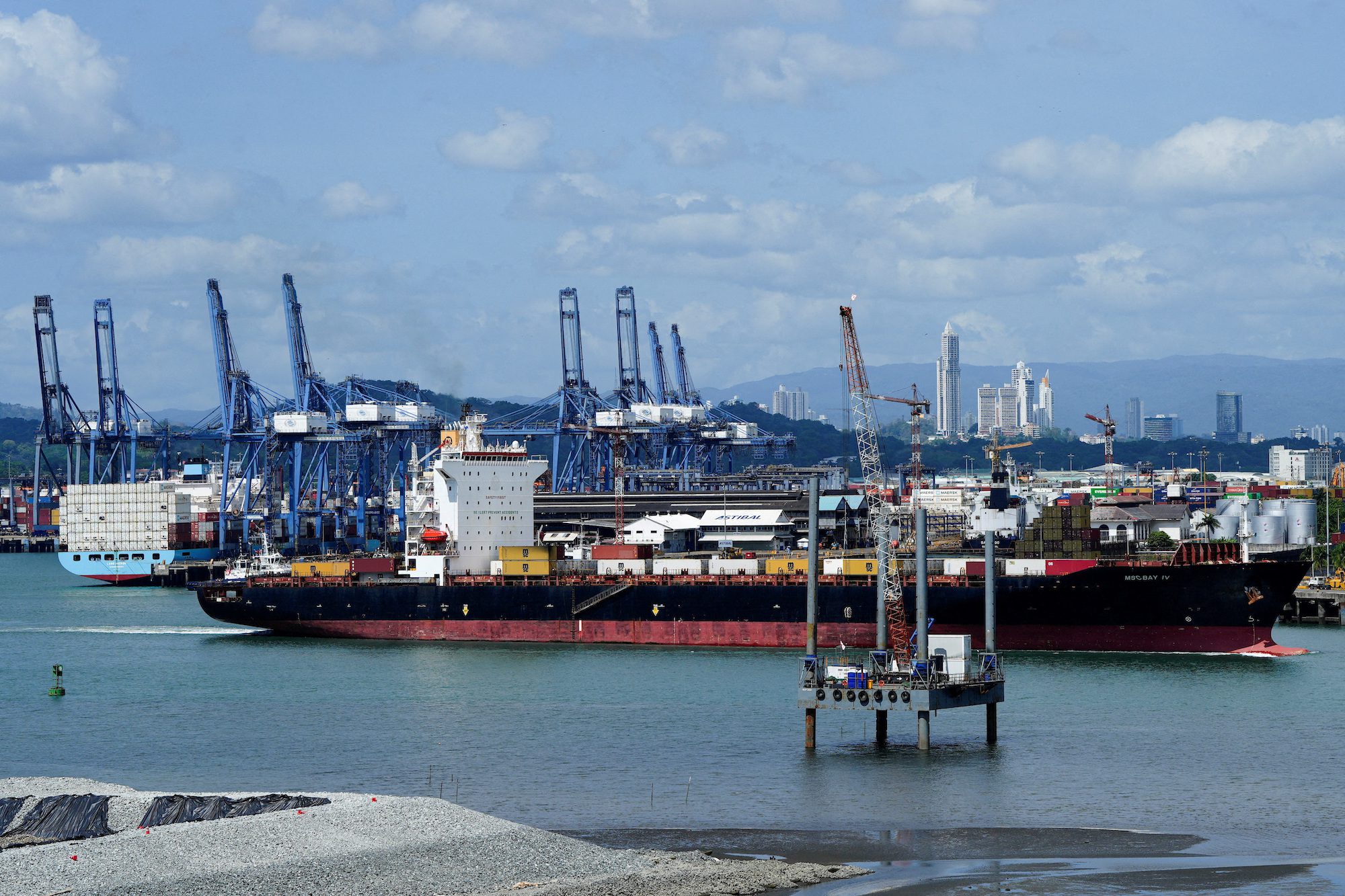LONDON/ATHENS, April 9 (Reuters) – President Donald Trump’s administration is considering softening its proposed fee on China-linked ships visiting U.S. ports after a flood of negative feedback from industries that said the idea could be economically devastating, according to six sources.
Among the changes under consideration are delayed implementation and new fee structures designed to reduce the overall cost to visiting Chinese vessels, according to the six sources with knowledge of the matter.
The sources asked not to be named due to the sensitivity of the issue.
The White House and the Office of the U.S. Trade Representative (USTR), the government department involved in the drafting the proposal, did not respond to requests for comment.
Not all of the agency’s proposed multimillion-dollar fees for Chinese-built ships to dock at U.S. ports will be implemented and may not be cumulative, U.S. Trade Representative Jamieson Greer told a U.S. Senate Finance Committee hearing on Tuesday.
The USTR has proposed that fees that could top $3 million per U.S. port call for China-built or linked vessels. Its proposal came after it completed an investigation into China’s maritime sector and development plans that began in April 2024.
The Trump administration argues that fees would curb China’s growing commercial and military dominance on the high seas and promote the U.S. domestic maritime industry.
But representatives from numerous industries, from coal to agriculture, argued during public hearings last month that the fee proposal could make it impossible to ship everything from coal to soybeans to market because of the prevalence of Chinese-linked vessels in the existing global shipping fleet, and the time it would take to replace them.
China’s foreign ministry on Wednesday reiterated its stance on the issue, saying measures such as levying port fees would not revitalize America’s shipbuilding industry but only “harm others and itself.”
The Trump administration was also thinking about changes to the fees to make them less onerous and reduce their impact on U.S. businesses, all six of the sources said.
Among options the Trump administration was considering is charging a fee that is adjusted based on the number of Chinese-built ships in a company’s fleet, one source said. That would mean lower fees for those companies with fewer ships built in China.
The administration was also mulling a charge based on the tonnage of unloaded vessels rather than a flat fee, two of the sources said. This would mean lower fees for smaller ships, rather than flat fees for all vessels. That might ease the burden on ship owners with smaller vessels involved in niche trades such as transporting grains or other commodities.
The USTR had formulated the fee proposal with larger container ships that transport retail goods in mind, the sources said. The impact on commodities flows had not been fully considered, they said.
“The most impacted sectors are container shipping and car carriers, given their consolidated nature, and high proportion of payable fees under the proposed framework,” Jefferies analyst Omar Nokta wrote in an April 2 note.
“However, all shipping segments would be affected, given the level of disruption likely to take place as operators shift vessels to minimize exposure to U.S. fees.”
(Reporting by Jonathan Saul and Renee Maltezou, additional reporting by Georgina McCartney and Lisa Baertlein, additional reporting by Eduardo Baptista in Beijing; Editing by Richard Valdmanis and David Gregorio)
(c) Copyright Thomson Reuters 2025.

 Join The Club
Join The Club












